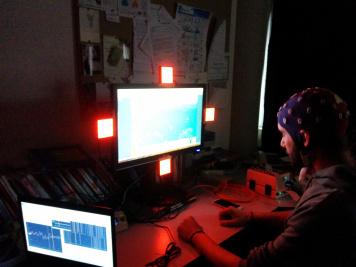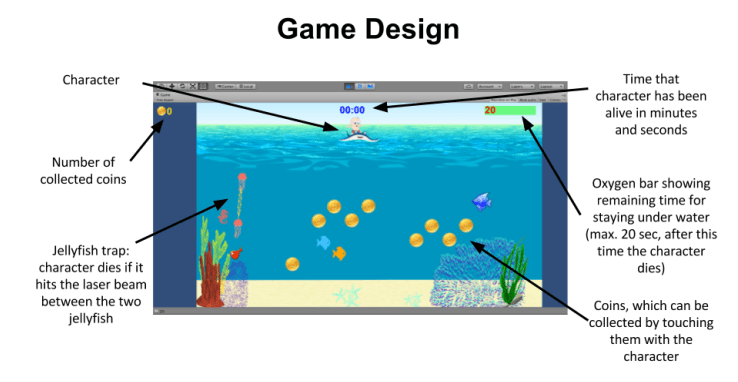Brain-Computer Interfaces
Keywords: Brain-Computer Interfaces, game, SSVEP
BrainDiver

Together with two fellow students, I built a BCI-controlled 2D treasure hunt game. The game character is controlled using Steady-state visual evoked potentials (SSVEPs). Players steer the character in four directions (up, down, left, right) by focusing on a light, placed at the side of a computer screen in the respective position. The lights are flashing with different frequencies, which can be read out from the occipital areas of the brain (channel Oz).

The game design of our Brain-Computer Interface (BCI) game, implemented for a master course. We successfully conducted a small study (N=4) and evaluated the game compared to the same game with key controls. The results show that people had a more positive game experience with the SSVEP-controlled version as compared to the traditional key-control version. We encountered common problems with SSVEP, such as relatively low feeling of control and higher tiredness after playing the game compared to traditional key controls. However, in comparison to traditional key-control, the SSVEP-controlled game was generally rated more positive and had higher scores for immersion, flow and challenge.